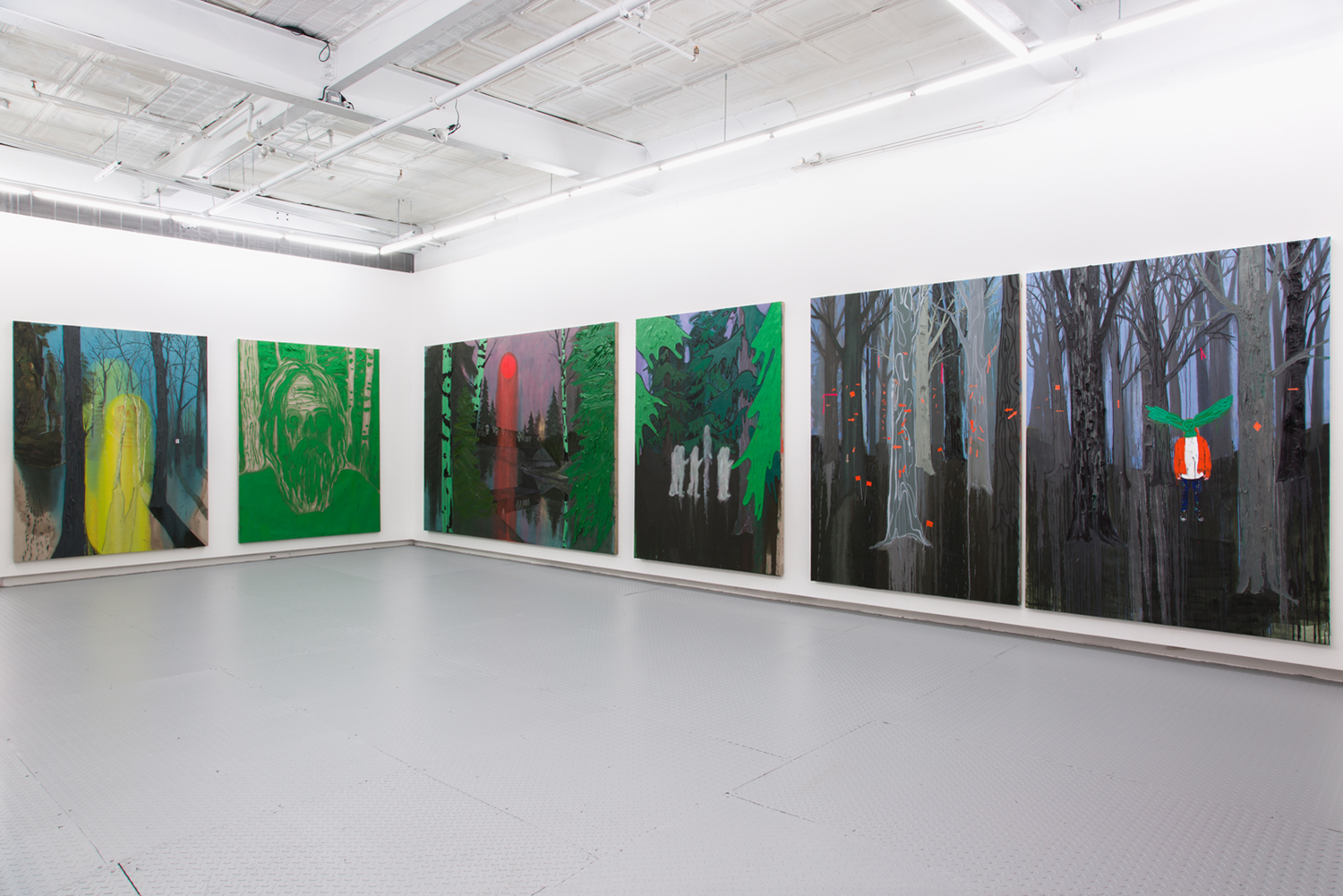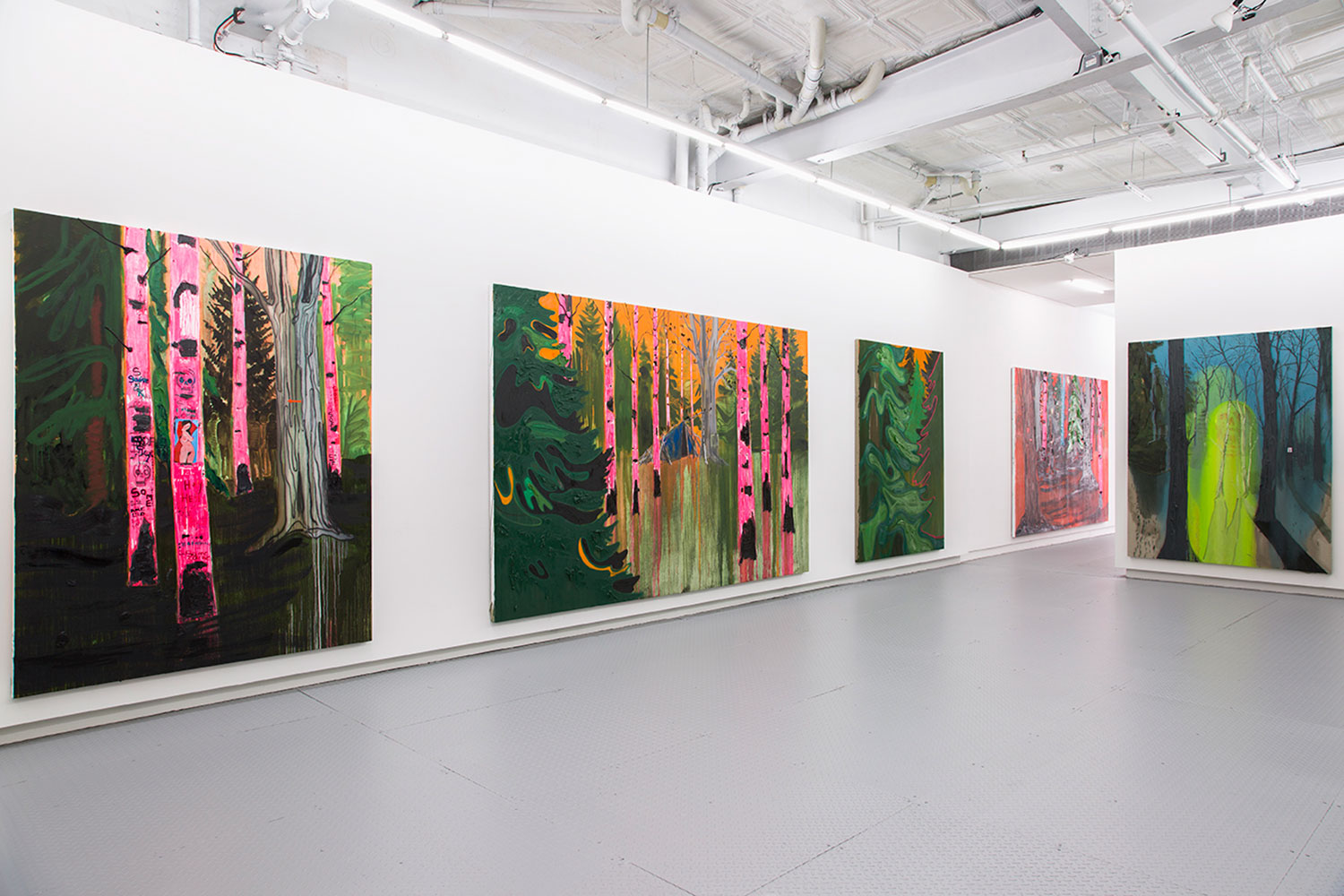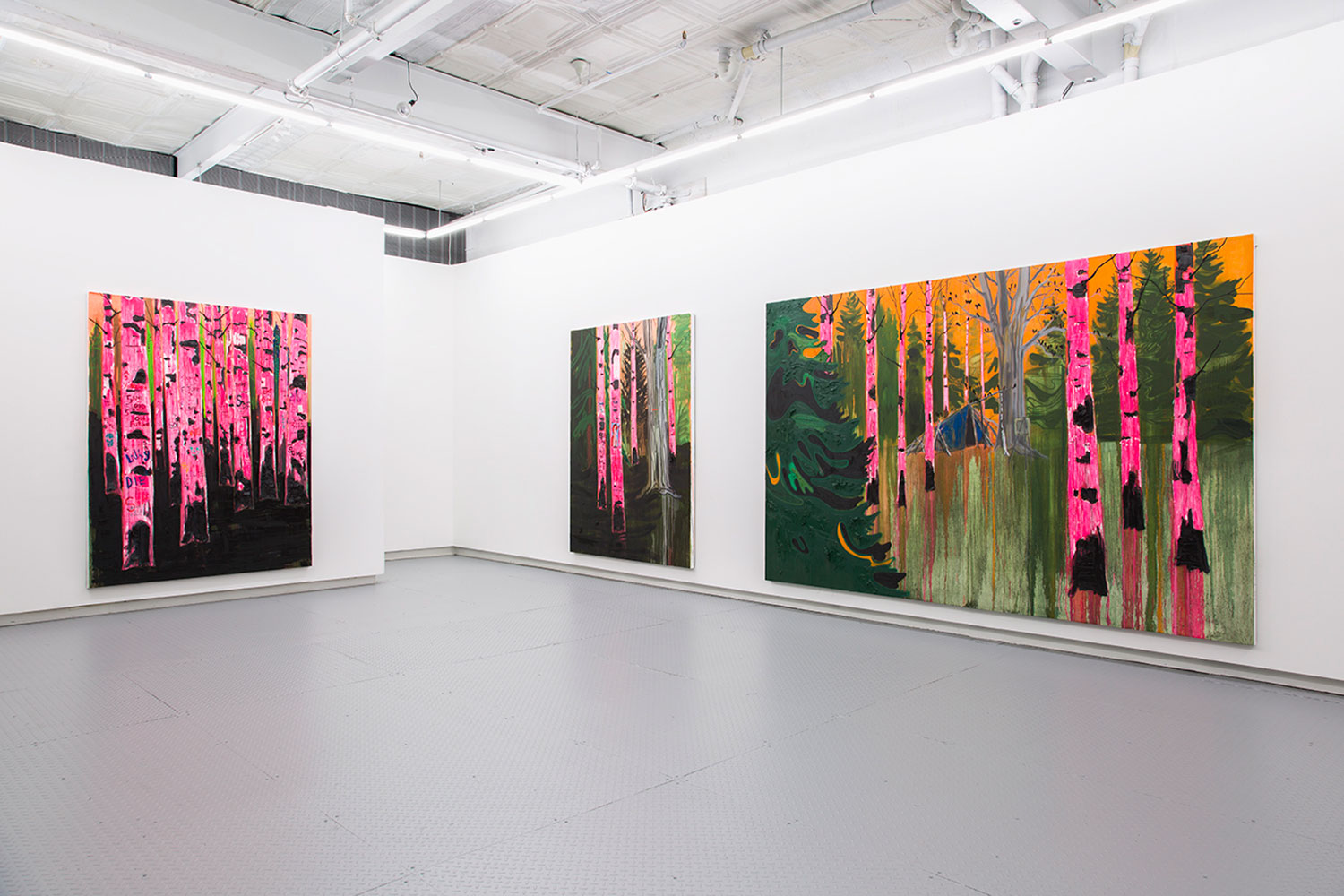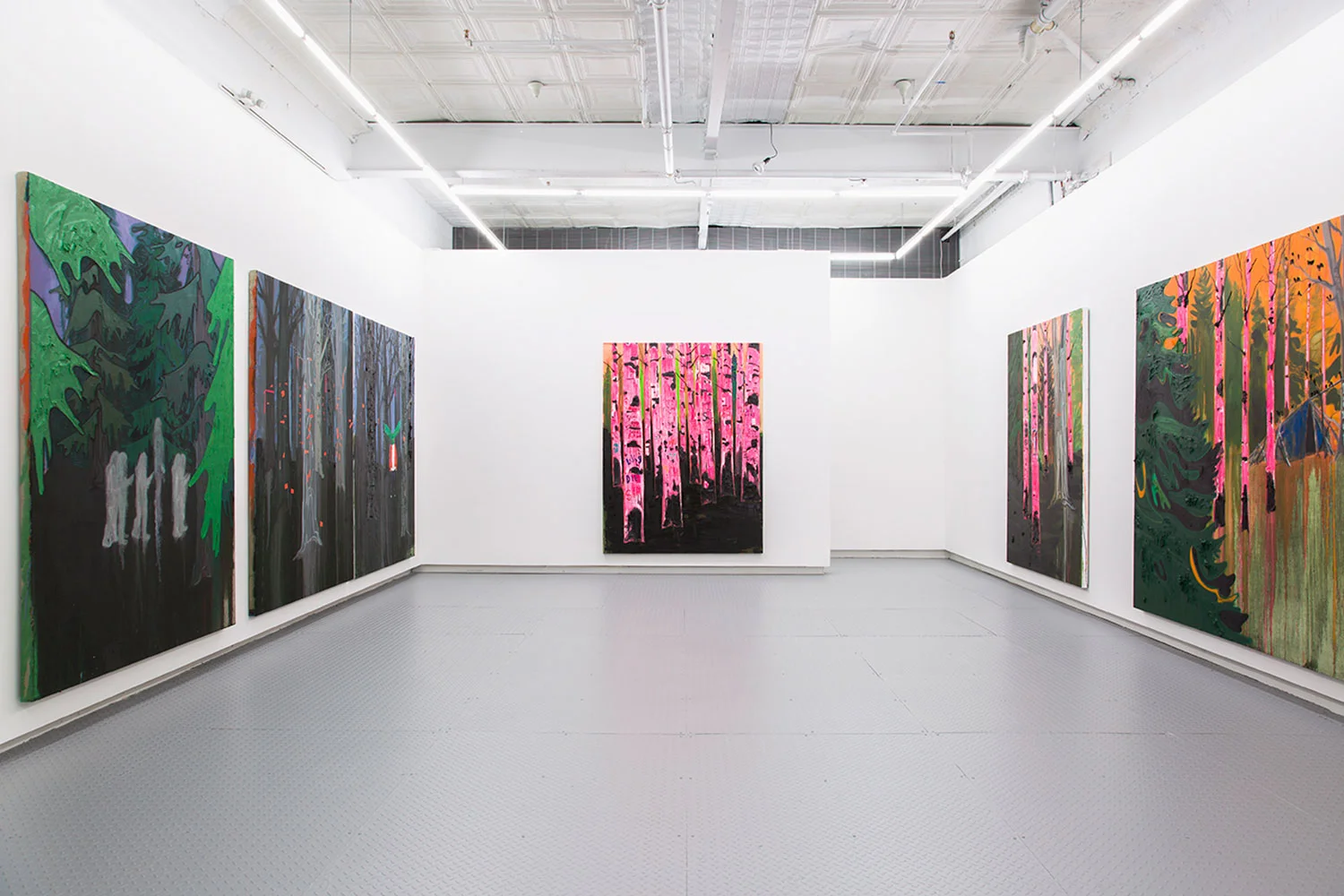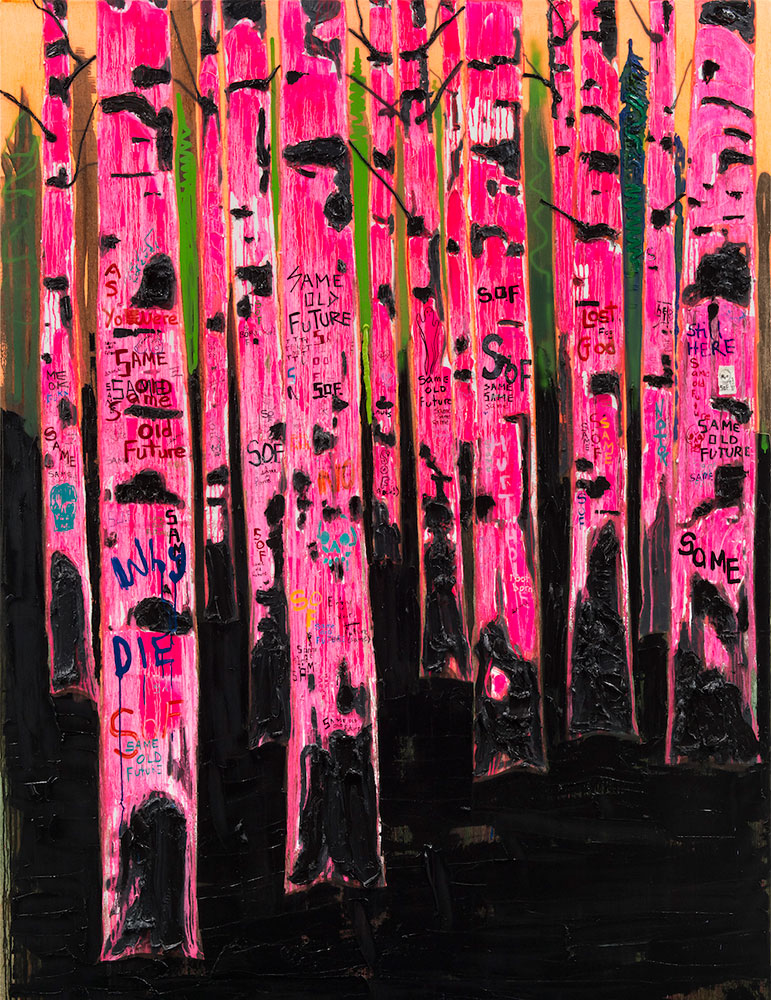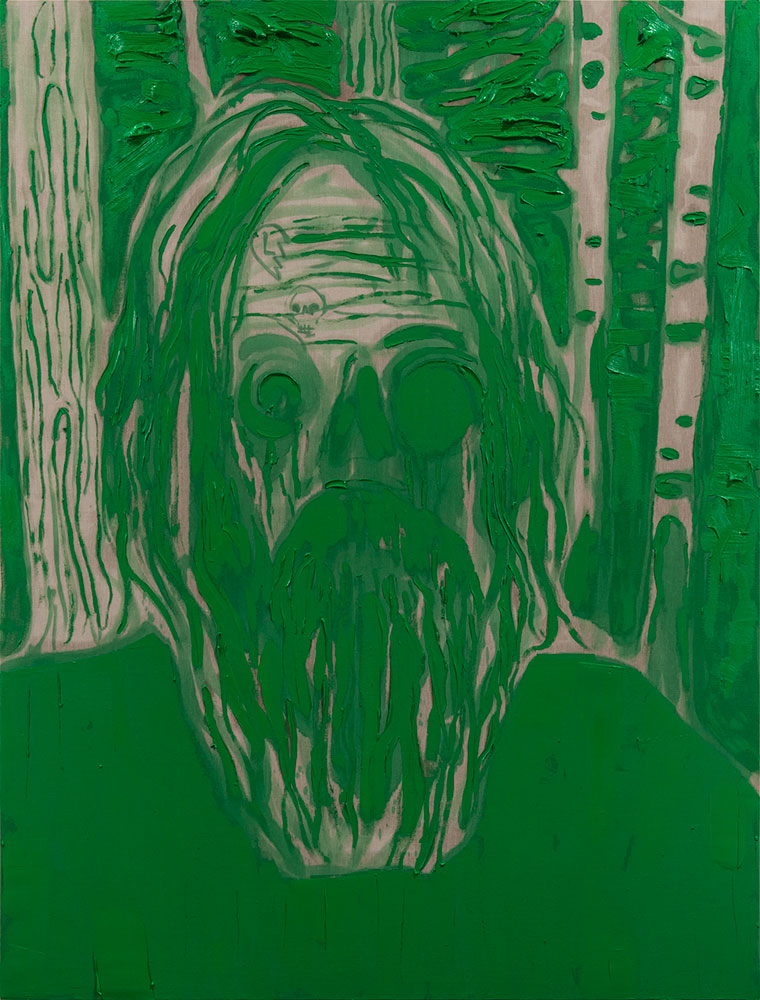Kim Dorland
Same Old Future
curated by Jean-Michel Othoniel
Mar 7 - Apr 22, 2018
Opening
Mar 6, 6 - 8 p.m.
“Same old future,” “fuck Love,” these are some of the declarations etched into the tree trunks which make up Kim Dorland’s forests. Skulls, phalluses, and nude women accompany these delinquent inscriptions - the kind of graffiti we imagine discovering on the walls of public bathrooms, polluting urban spaces and inhospitable domiciles, rather than inscribed on the edge of the forest. And so how does this thicket of woods become a returning point for the wanderer?
Dorland’s painted scapes are frontiers, warnings, thresholds. They are some of the marginal realms between city and nature, sites primordially marked by man—the forest’s margins depicted as a public dumping ground. Scrawled in vivid colors, the wanderers’ forgotten proclamations point us away from an idealized natural world towards nature’s aggressive end. The paintings this graffiti populates do not function like Nabis scenes as, for example, Peter Doig’s paintings might. There is no Romanticism here, no contemplation, since it is not the forest proper which is being relayed but an in between, a zone of disenchantment.
Like all thresholds, this representational space allows for a slippage from one realm to the next. Dorland depicts, before all else, a passage from one stratum to another and, more specifically, the metamorphosis between urbanity and the ancestral forest. This place where the city enmeshes with nature is both mangled and sublimated. It is neither an absence nor a literal gap, like a no man’s land. Instead, it is a fruitful site for reciprocity, functioning twofold as a ground to discharge detritus and emotions. Adolescent scribbles and toxic colors defacing nature recall certain rites of passages between adolescence and adulthood; the social and a-social; mutilation and contemplation; aggression and fascination.
Filled with trash, this arena is nevertheless reassuring since it is miserably human, an apt site for the artist to identify themself. In Dorland’s paintings we find the terror of brute nature along with the fascination of urbanity, calling to my mind migrant camps on the edge of French highways. Places where cast-off materials are inevitably transformed into homes and shelters, offering possibility and hope. Unfortunately, there is always beauty in wandering, among the woods at the edge of the city where one may hide, in the forest that skirts the highways we cruise, in the sordid places where desperate travelers index their desire to live or love.
Dorland leaves the identity of the Invisibles, these individuals who leave behind empty traces, undisclosed, so that they pass through like shadows traversing primitive territory. Territory of the Invisibles portrays archeological sites of violence, places of primal desire. The delimits painted by Dorland function like a knot between these various territories rather than as a representation of any particular periphery. This is a juncture between social and symbolic spaces and we lie on the edge in waiting, waiting to enter into this unknown forest.
- Jean-Michel Othoniel
Translated from the original French Le territoire des invisibles
Kim Dorland lives and works in Vancouver, Canada. Solo presentations of his work have been held at the McMicheal Canadian Art Collection (Canada), the Museum of Contemporary Art Denver, and the Contemporary Calgary (Canada). His work is found in collections including the Montreal Museum of Fine Art (Canada); Montreal Museum of Contemporary Art (Canada); Museum of Contemporary Art San Diego (USA); The Beth Rudin DeWoody Collection (USA); The Oppenheimer Collection, Nerman Museum of Contemporary Art (USA).

